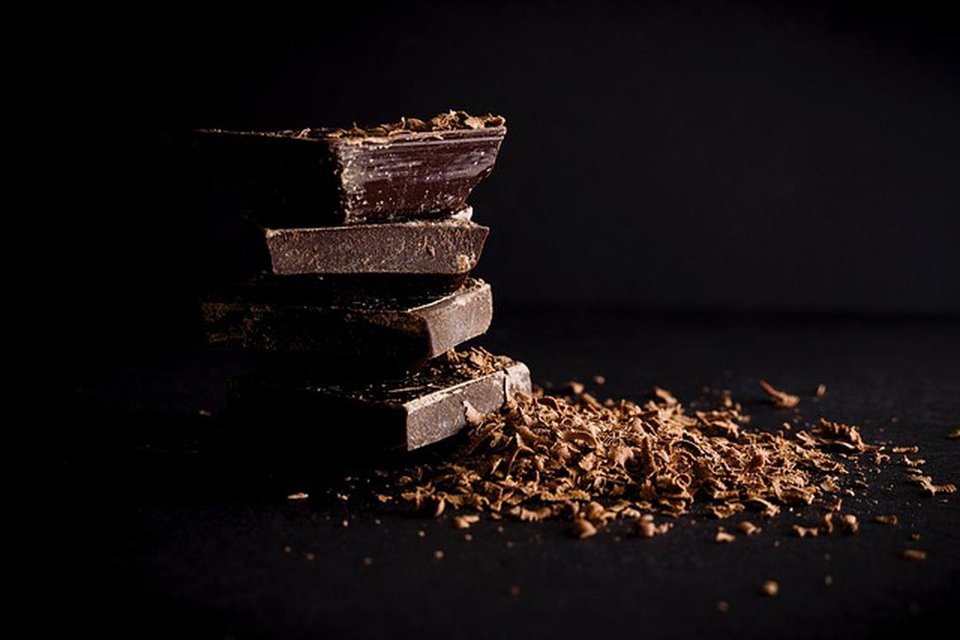How to eat healthier at hawker centres

Published on
03 Sep 2017
Published by
The Straits Times
Plan in advance what you want to eat, ask for less oil and salt and eat less by sharing food
When housewife Angeline Lim orders wonton and fishball noodles at a hawker centre, she always asks for less oil and salt.
Whether the hawker will comply is a "50-50 chance", says the 52-year-old.
She says: "Some sellers will get angry or treat you rudely as they don't want to compromise on the taste of their dishes."
She makes it a point to ask anyway.
Sometimes, asking for healthy options at hawker centres can be seen as being finicky or insulting to the cook - but diners such as Ms Lim are getting more endorsement on their quest for healthy eating.
Last week, during the National Day Rally, Prime Minister Lee Hsien Loong appealed to Singaporeans to watch their diets to curb mounting health conditions such as diabetes.
He urged Singaporeans to choose healthier dishes such as yong tau foo or fish soup if they eat out, or healthier alternatives with less oil, sugar and salt that some hawkers offer.
This is in line with measures taken by the Health Promotion Board (HPB) targeting hawkers since December.
For the past three years, it has been running the Healthier Dining Programme, which encourages food-and-beverage businesses to offer healthier dining options.
They can display on their stall front labels such as "Lower in calories" for providing meals up to 500 calories each and "We serve wholegrain options" for incorporating wholegrain noodles, rice and bread in their food.
HPB plans to get four in 10 hawker stalls to sell at least one healthier dish by 2019. The board has identified a list of 63 dishes that tend to be under 500 calories, including beef noodle soup, masala thosai and mee soto.
But the fact remains that most hawker dishes are unhealthy, says Ms Bibi Chia, a principal dietitian at Raffles Diabetes & Endocrine Centre.
She says a healthy meal should contain less than 500 calories, be low in fat, sugar and salt and high in nutrients such as calcium and dietary fibre and minerals such as iron and zinc.
Most hawker dishes do not make the grade as they contain high amounts of fat and salt and little vegetables.
"Char kway teow is cooked the same way as decades ago, even after years of public healthy-eating education," Ms Chia says.
Diners should take charge of their diets instead of depending on hawkers to change their recipes, she adds.
One way is to plan what you want to eat in advance, which is easy because people are familiar with the food options in the hawker centres near their homes and offices.
"Diners tend to give in to temptation to order something unhealthy when they are hungry," she says.
One can also eat less by sharing food, especially unhealthy dishes.
"Share a plate of fried noodles with someone and order something healthy, like a bowl of fish soup, to share," she suggests.
She adds that diners need to be persistent in asking that their food be cooked with less oil and salt and with more greens.
"Just treat it as if you are ordering food in a restaurant, where it is the norm to customise food orders," she says. "You just have to do it as it is your health you are talking about."
For diners though, sometimes the mind is willing, but the flesh is weak.
Take finance executive Mohamad Saddiq, 29, who says: "Scraping away the gravy of my beef rendang or having less mee soto gravy is not realistic as the coconut and fat make these dishes delicious.
"It would be like eating a cake without the cream."
His solution?
"Limit these dishes to two servings a week."
The Sunday Times takes Ms Chia to Tiong Bahru Food Centre, where she recommends some of the healthier dishes easily found in hawker centres.
Here are six suggestions.
SIX HEALTHIER OPTIONS
YONG TAU FOO
Order the soup version as very little oil is added to the dish. Avoid deep-fried items such as ngoh hiang and beancurd skin, and processed meats such as sausages. Those with high blood pressure should not drink too much of the soup as it can be high in sodium.
If you order six items, ensure that four of them are vegetables or vegetable-based items such as bittergourd with fish paste. The other two can be soya bean-based items such as tofu with fish paste.
CHAPATI
A serving of chapati contains 143 calories and 5g of fat, less than other Indian flatbreads. It is also made with whole wheat flour, which has more fibre. Diners can ask for the chapati not to be made with ghee.
Pair the unleavened bread with dhal curry, which is often not cooked with coconut cream and has less saturated fat than regular curry. Dhal is made from lentils, a plant-based protein.
MEE SOTO
Mee soto (433 calories a serving) has a lower calorie and fat content compared with mee siam (521 calories) and mee rebus (559 calories). To make it healthier, remove the skin from the shredded chicken. Ask for a smaller serving of noodles if you are concerned about your carbohydrate intake - whether for managing diabetes or weight control. Request more vegetables, such as beansprouts and spring onions, and consume the soup only with the noodles and not on its own.
POPIAH
This low-fat snack is a good way to consume vegetables such as lettuce and turnips. Ask the hawker to reduce the amount of sweet sauce by two teaspoons.
ECONOMY RICE
Ordering two types of vegetables and a meat with rice is a good option. Ensure that half the plate is filled with lightly cooked green vegetables, such as broccoli, and the rice and meat should each take up a quarter of the plate. Avoid vegetables that tend to be cooked with more fat, such as long beans, which are deep-fried before being cooked in sauces such as chilli paste. Skip the gravy that comes with meat as it tends to be high in fat and salt. People tend to consume more rice when there is more gravy. If needed, ask for the gravy to be served on the side to control how much you consume.
SLICED FISH SOUP
This lean protein dish is low in fat and there is the option of adding vegetables. Opt for boiled fish instead of deep-fried pieces. Omit the evaporated milk as it contains three times more fat than full-cream milk. Do not drink the soup as it can be high in salt. Keep rice or noodle portions fist-size.
ORDERING ALTERNATIVES
It can be difficult to control one's food cravings in a hawker centre. Dietitians share tips on making healthier choices when faced with five dilemmas.
1) When ordering fishball noodles, which is the healthiest noodle option: mee kia (thin yellow noodles), mee pok (thick yellow noodles), kway teow or bee hoon? Bee hoon because it contains fewer calories and lower amounts of fat and sodium than the other noodles, says Dr Lim Su Lin, chief dietitian at National University Hospital.
A 100g portion of bee hoon soup contains 153 calories, while the same amount of mee kia and mee pok each has 267 calories.
The healthiest option is high- fibre brown rice bee hoon. Remember to omit pork lard and ask for more vegetables.
2) How can a plate of chicken rice be made healthier? A regular serving of chicken rice (382g) has about 600 calories. If you remove the chicken skin, that will cut down about 2g to 3g of fat, says Ms Lee Yee Hong, senior dietitian at Mount Elizabeth Novena Hospital.
Omit the gravy to reduce sodium, fat and calorie intake.
Substitute chicken stock-infused rice with plain rice to lower the calorie count by 100 calories, remove 8g of fat and 800mg of sodium. One's recommended daily sodium intake is up to 2,000mg.
Get an additional serving of boiled vegetables to increase fibre.
Ms Hedy Cheng, a dietitian at Khoo Teck Puat Hospital, adds that the dish can be customised based on how frequently diners eat it.
If they eat chicken rice once a month, enjoy the dish as is, but add more vegetables such as cucumber and tomatoesand remove the chicken skin from the meat.
If diners eat chicken rice more than once a week, opt for plain white rice or brown rice, if available. Avoid eating the chicken with excessive gravy or soya sauce to reduce salt intake.
3) How can a meal from the vegetarian economy rice and bee hoon stall with mock meat be made healthier? "Vegetarian food can be less healthy than you think," says Ms Sarah Sinaram, a nutrition and dietetics manager at Mount Alvernia Hospital.
"Depending on what you choose, it can be a good source of fibre, but it can also be high in calories, fat and sodium."
Mock meat is usually the culprit, being gluten-based and high in salt. Avoid it if you can. Go for vegetables, tofu, lentils or egg-based dishes instead.
Pay attention to the cooking method of these side dishes, adds Ms Cheng from Khoo Teck Puat Hospital.
Limit consumption of deep-fried items such as fried tofu skin or deep-fried battered vegetable fritters to no more than twice a week.
Avoid slathering curry or dark sauces over the rice or bee hoon. Ask for clearer sauces from vegetable stir-fries instead.
4) I've ordered brown rice at an economy rice stall. How do I make my meal more appealing? Choose side dishes cooked with herbs and spices, such as cinnamon braised chicken, assam or tamarind fish, basil chicken or dried chilli chicken to inject more flavour into your meal, says Dr Lim from NUH.
Make sure the dishes are cooked using healthier methods such as steaming, grilling, roasting, baking or stir-frying instead of deep-frying.
It is recommended to have two types of vegetables and one meat dish on your plate.
5) I am craving char kway teow. How can I order/consume the dish to make it healthier? Ask the hawker to omit Chinese sausage and add more bean sprouts, and ask for the dish to be cooked with less oil, says Ms Jaclyn Reutens, a dietitian at Aptima Nutrition & Sports Consultants. Doing so will slash 30 per cent off the 745 calories and 38.4g of fat in a 384g serving of the dish.
Share the dish with someone to halve the calories.
The Straits Times © Singapore Press Holdings Limited. Reproduced with permission.
ALL views, content, information and/or materials expressed / presented by any third party apart from Council For Third Age, belong strictly to such third party. Any such third party views, content, information and/or materials provided herein are for convenience and/or general information purposes only. Council For Third Age shall not be responsible nor liable for any injury, loss or damage whatsoever arising directly or indirectly howsoever in connection with or as a result of any person accessing or acting on any such views, content, information and/or materials. Such third party views, content, information and/or materials do not imply and shall not be construed as a representation, warranty, endorsement and/or verification by Council For Third Age in respect of such views, content, information and/or materials.







